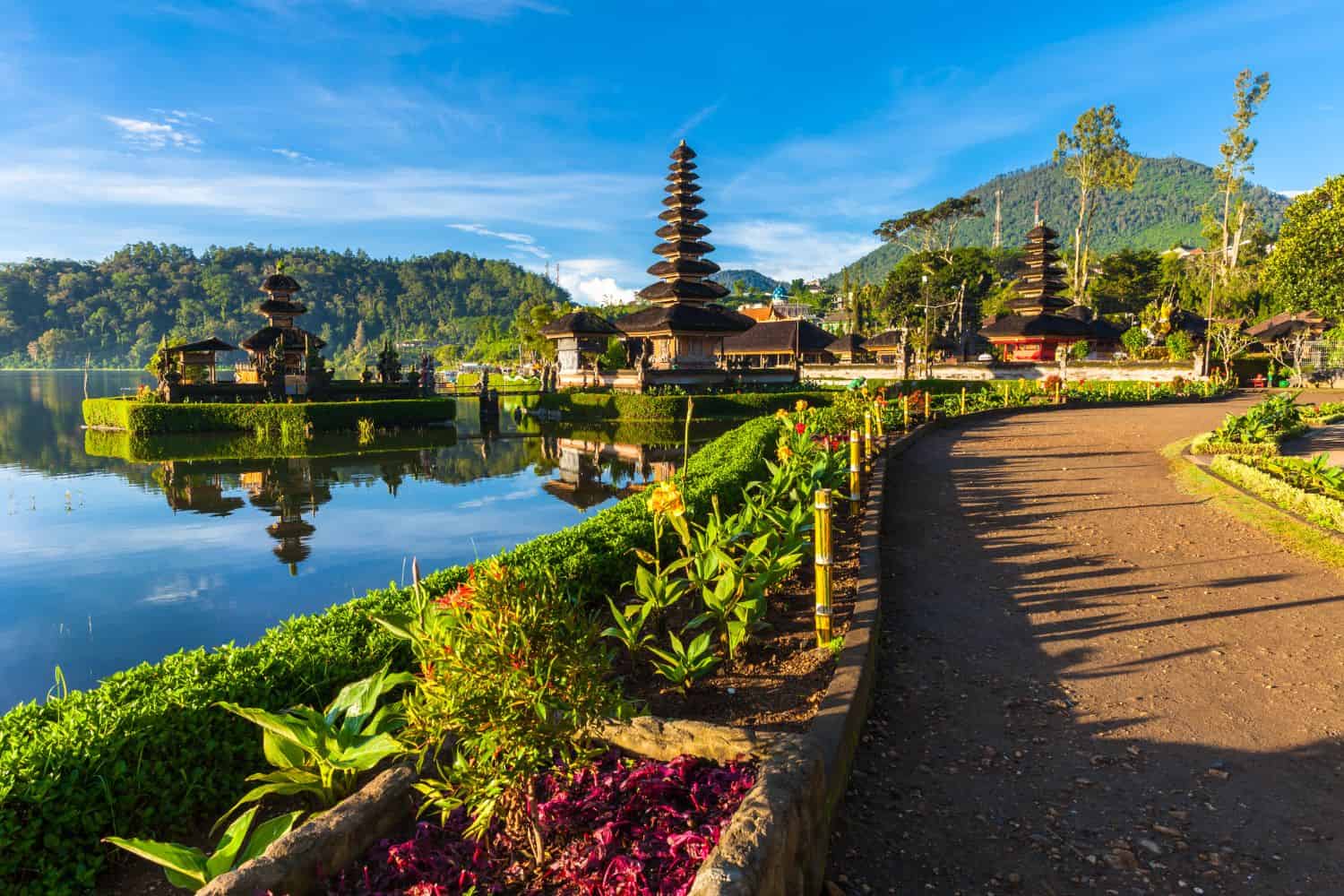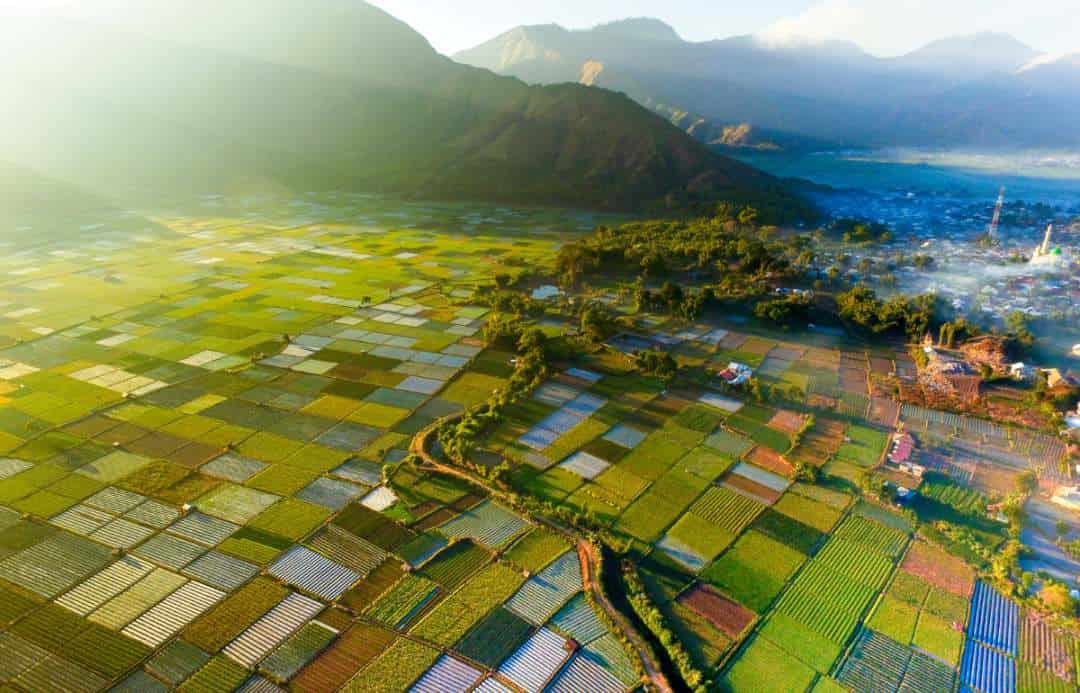Situated in Southeast Asia, this archipelagic nation’s geographic location has played a pivotal role in shaping its history and cultural identity.
Nestled in Southeast Asia, Indonesia geography beckons adventurous travelers with its sprawling archipelago, lush rainforests, and ancient historical sites. From exploring the majestic volcanoes of Java to uncovering the cultural tapestry of Jakarta, Indonesia’s diverse landscapes and rich history offer an unforgettable journey for intrepid tourists seeking a unique and enriching experience.
The physical geography of Jakarta City paints a picture of awe-inspiring natural masterpieces. From the stunning cliffs of Bali’s coastline, once home to ancient temples that represented the nation’s rich Hindu heritage, to the diverse ecosystems that span the country’s islands, Indonesia stands as a testament to nature’s grandeur.
Top Geographic Features of Indonesia
- Indonesian Archipelago: The sprawling Indonesian archipelago, consisting of over 17,000 islands, dominates the country’s geography, shaping its topography and climate patterns.
- Kapuas River: One of Indonesia’s major rivers, the Kapuas River, flows through the western part of the country, providing essential water resources for agriculture and irrigation.
- Wallace Line: This biological demarcation line, named after Alfred Russel Wallace, separates Indonesia from Australia and has played a significant role in the region’s biodiversity.
- Bali Strait: Located between the islands of Bali and Java, the Bali Strait is an important maritime route and has historical and cultural significance.
- Mount Bromo: An active volcano in East Java, Mount Bromo is famous for its otherworldly landscapes and is a popular tourist destination.
- Lake Toba: Situated in North Sumatra, Lake Toba is one of the world’s largest volcanic crater lakes and is a site of geological and cultural importance.
- Komodo Island: Known for the Komodo dragon, the world’s largest lizard, Komodo Island is part of the Lesser Sunda Islands and is a UNESCO World Heritage Site.
- Papuan Highlands: This rugged mountainous region in eastern Indonesia is home to diverse flora and fauna and is culturally significant for its indigenous populations.
- Raja Ampat Islands: Located in West Papua, these islands are renowned for their pristine coral reefs and are considered one of the world’s best diving destinations.
- Borneo Rainforest: The lush rainforests of Borneo, shared with Malaysia and Brunei, contain unique biodiversity and are vital for the region’s ecology.
These geographic features play a crucial role in shaping Indonesia’s landscape, climate, and cultural diversity, making them essential elements in defining the country’s geography.
Indonesia Geography
Exploring the Indonesia National Geographic canvas reveals a breathtaking array of geographic features. From towering mountain ranges to arid deserts and lush valleys, the country offers a mesmerizing tapestry of natural wonders.
- Mountain Ranges – The Crown of Diversity: Similar to documentaries that often feature towering mountain ranges, Indonesia boasts the majestic Jayawijaya and Barisan ranges. These rugged peaks not only add to the country’s scenic beauty but also offer unique biodiversity and have shaped its cultural identity.
- Lakes – A Kaleidoscope of Colors: Indonesia’s Lake Toba, with its vast turquoise expanse, resembles the picturesque landscapes captured in photographs. This crystal-clear lake, surrounded by lush greenery, reflects the region’s geological richness.
- Deserts – Undulating Sands of Time: Just as desert features highlight vast sandscapes, Indonesia’s Bintan Desert showcases undulating sand dunes and extreme temperatures. This arid region tells stories of resilience and adaptation in the face of nature’s challenges.
- Historical Sites – Unveiling the Past: Indonesia’s historical sites, like the Borobudur Temple, evoke memories of explorations that uncover ancient civilizations. The remnants of magnificent temples and statues stand as a testament to the country’s rich heritage.
- Ethnic Diversity – A Cultural Melting Pot: Similar to the National Geographic focus on diverse cultures, Indonesia is a tapestry of ethnic groups, including Javanese, Sundanese, Balinese, and Batak. Each group contributes unique traditions, languages, and customs, creating a vibrant cultural mosaic.
- Wildlife – A Sanctuary for Nature: Indonesia’s protected areas, such as Komodo National Park, mirror the coverage of wildlife conservation. These regions serve as crucial habitats for endangered species and unique ecosystems, preserving biodiversity in a challenging environment.
- Geological Marvels – A Natural Showcase: The country’s geological wonders, like the Tangkuban Perahu volcano, showcase Indonesia’s geological diversity amidst its archipelago. Such features demonstrate human perseverance in overcoming geographic challenges.
- Remote Exploration – Uncharted Territories: The remote and isolated Papua region beckons adventurers, much like quests into uncharted territories. This pristine land offers a glimpse into untouched landscapes and ancient cultural connections.
Indonesia geographic features are marked by the dominating presence of the Jayawijaya and Barisan mountain ranges. These majestic peaks, soaring above 4,000 meters, create a breathtaking backdrop for the nation’s diverse topography. The historic Wallace Line, a biogeographical boundary, runs through the archipelago, marking a transition between Asian and Australian flora and fauna.
Flowing gracefully through the Indonesian terrain are the life-giving rivers of the Kapuas and the Mamberamo, vital for agriculture and transportation. Additionally, the expansive Bintan Desert and Meratus Mountains add to the country’s unique geography.
Indonesia Geographic Location
Indonesia geographic location is strategically significant, and its position has played a pivotal role throughout history. Situated at the crossroads of major maritime routes, the country has facilitated the exchange of goods, ideas, and cultures between different regions, leaving an enduring mark on its historical significance.
Borders of Indonesia
Indonesia shares its borders with several neighboring countries and has extensive coastlines along the Indian Ocean and the Pacific Ocean. Here is Indonesia physical geography with its neighboring countries and the approximate total length of each border:
- Malaysia: The border between Indonesia and Malaysia stretches over approximately 2,019 kilometers.
- Papua New Guinea: Indonesia shares a border with Papua New Guinea, which is roughly 820 kilometers long.
- East Timor: The border between Indonesia and Timor-Leste spans approximately 228 kilometers.
| Indonesia Neighboring Country | Border Length (Approximate) |
|---|---|
| Malaysia | 2,019 kilometers |
| Papua New Guinea | 820 kilometers |
| East Timor | 228 kilometers |
These international borders define Indonesia’s connections to different regions and contribute to the country’s geopolitical significance as a crossroads between Southeast Asia and the Pacific.
Geography of Indonesia
As the capital city of Indonesia, Jakarta is a captivating microcosm of the country’s human geography. Here, various ethnic groups, including Javanese, Sundanese, Balinese, and Batak, coexist, contributing to the city’s vibrant cultural tapestry.
Jakarta, the capital city of Indonesia
- City of Contrasts: Jakarta is known for its stark contrasts, where modern developments coexist with traditional neighborhoods, creating a unique blend of old and new.
- Citarum River: The Citarum River flows through the city, providing water for irrigation and contributing to the city’s agriculture.
- Jakarta’s Elevation: The city is located at a relatively low elevation, with most parts near sea level, surrounded by the stunning landscapes of the Indonesian archipelago.
- Green Spaces: Jakarta is home to several beautiful parks and green areas, including Taman Mini Indonesia Indah, offering a serene escape amidst the bustling city.
- Jakarta’s Historical Significance: With a history dating back over centuries, Jakarta has witnessed various civilizations and played a pivotal role in regional trade routes.
- Diverse Architecture: The city showcases a diverse architectural heritage, reflecting influences from indigenous Indonesian, Islamic, and modern styles.
- Tropical Climate: Jakarta experiences a tropical climate, with high temperatures and humidity throughout the year, making it a popular destination for tourists.
- Monas Monument: The National Monument (Monas), located in the heart of Jakarta, is an iconic symbol of Indonesia’s independence and national pride.
- Jakarta’s Economy: The city serves as Indonesia’s economic and cultural hub, attracting people from all over the country seeking opportunities and education.
- Population Growth: Jakarta has experienced rapid population growth, with a significant influx of people from various regions, leading to urbanization and infrastructure challenges.
Historical Geographical Importance of Indonesia
Throughout the ages, Indonesia’s geographical significance has made it a sought-after stage for historical drama. As empires rose and fell, from the Majapahit to the Dutch and Japanese, Indonesia geographic location played a pivotal role in shaping the world’s history.
- Strategic Archipelago: Indonesia geographic location as an archipelago between the Indian and Pacific Oceans has made it a strategic point for trade, cultural exchange, and military conquests throughout history.
- Ancient Maritime Trade Routes: The ancient Spice Routes and other maritime trade routes passed through Indonesia, connecting East and West, facilitating the exchange of goods, ideas, and cultures.
- Colonial Conquests: Indonesia was a key battleground during colonial conquests, as various European powers sought control of its rich resources.
- World War II Theater: Indonesia became a significant theater during World War II, with Japanese forces occupying the islands and engaging in battles with Allied forces.
- Independence Struggle: Indonesia’s geographic diversity and strategic importance played a role in its struggle for independence from Dutch colonial rule.
- Influence of Hindu and Buddhist Empires: Indonesia was part of various Hindu and Buddhist empires, including Srivijaya and Majapahit, which influenced its culture and history.
- Influence of Islam: Indonesia’s geographic location at the crossroads of maritime trade routes also made it a key center for the spread of Islam, influencing its culture, art, and architecture.
The geographical position of Indonesia is a diverse tapestry of islands, cultures, and historical importance. With its stunning archipelago, ancient trade routes, and rich cultural landscapes, this nation continues to capture the world’s imagination. Despite challenges, Indonesia remains a compelling destination for the intrepid traveler and curious explorer, drawn to its natural beauty and historical intrigue.
In conclusion, Indonesia’s geographical significance has made it a stage for historical drama, with various empires and civilizations vying for control and leaving their mark on the region’s history. Its strategic position has shaped the world’s historical events and continues to play a pivotal role in the geopolitics of the region today.




